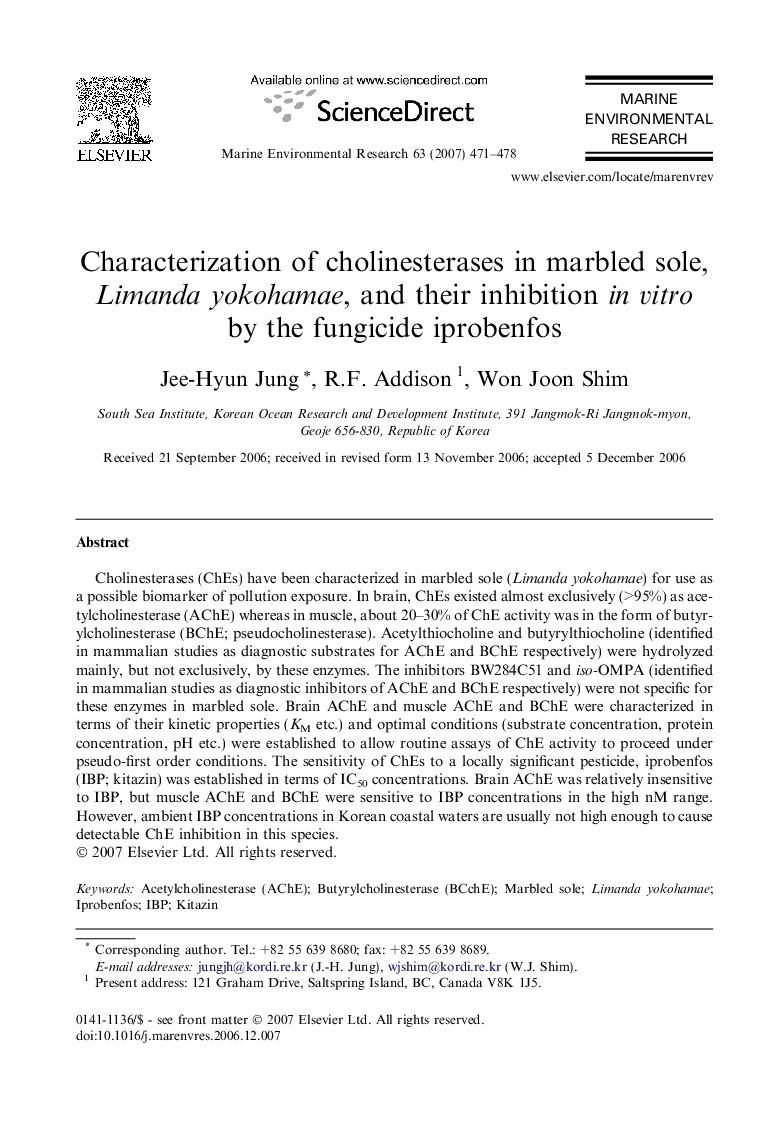| Article ID | Journal | Published Year | Pages | File Type |
|---|---|---|---|---|
| 4551678 | Marine Environmental Research | 2007 | 8 Pages |
Abstract
Cholinesterases (ChEs) have been characterized in marbled sole (Limanda yokohamae) for use as a possible biomarker of pollution exposure. In brain, ChEs existed almost exclusively (>95%) as acetylcholinesterase (AChE) whereas in muscle, about 20-30% of ChE activity was in the form of butyrylcholinesterase (BChE; pseudocholinesterase). Acetylthiocholine and butyrylthiocholine (identified in mammalian studies as diagnostic substrates for AChE and BChE respectively) were hydrolyzed mainly, but not exclusively, by these enzymes. The inhibitors BW284C51 and iso-OMPA (identified in mammalian studies as diagnostic inhibitors of AChE and BChE respectively) were not specific for these enzymes in marbled sole. Brain AChE and muscle AChE and BChE were characterized in terms of their kinetic properties (KM etc.) and optimal conditions (substrate concentration, protein concentration, pH etc.) were established to allow routine assays of ChE activity to proceed under pseudo-first order conditions. The sensitivity of ChEs to a locally significant pesticide, iprobenfos (IBP; kitazin) was established in terms of IC50 concentrations. Brain AChE was relatively insensitive to IBP, but muscle AChE and BChE were sensitive to IBP concentrations in the high nM range. However, ambient IBP concentrations in Korean coastal waters are usually not high enough to cause detectable ChE inhibition in this species.
Keywords
Related Topics
Physical Sciences and Engineering
Earth and Planetary Sciences
Oceanography
Authors
Jee-Hyun Jung, R.F. Addison, Won Joon Shim,
